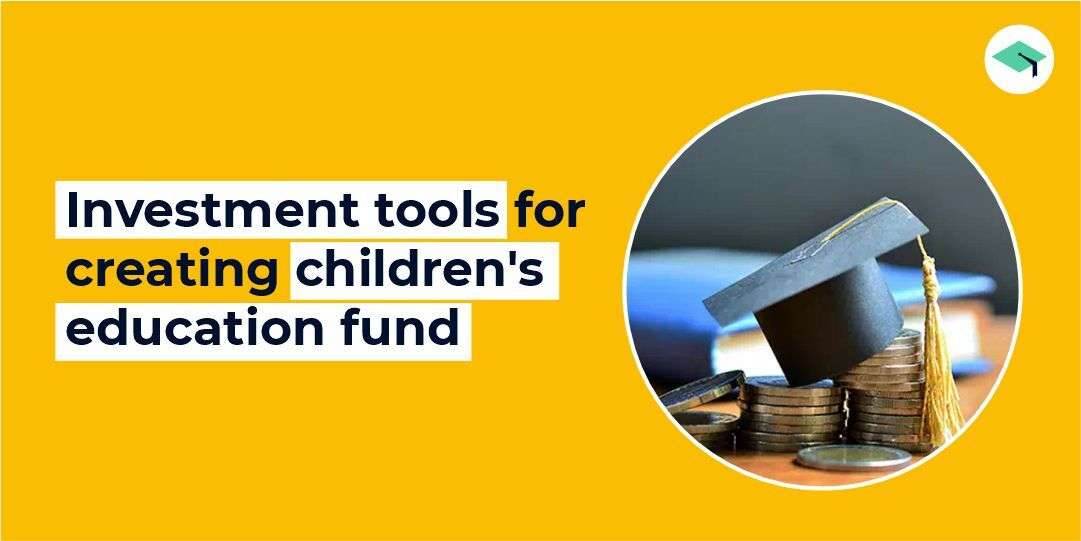Where to invest in children’s education? What are the best investment tools for creating children’s education fund? How much do you need to get started? Let’s find out in this article.
If you’re thinking about setting aside money for your children’s educational needs, it’s time to get moving and avoid delay at all costs.
Education inflation is rising considerably more quickly than general inflation. Parents are finding it more and more difficult to cover the rising fee structure and other expenditures involved with education.
This is true from basic to secondary to higher education. Saving in assets that can produce returns that outpace inflation is crucial.
This is why it is important to make a rough estimate of the course’s inflation-adjusted cost now, even before you begin saving. Your child might be interested in it in a few years.
Public Provident Fund (PPF), Sukanya Samriddhi Yojana (SSY), or equity mutual funds are the top three investment options for many parents while saving for their children’s education expenses.
Let’s look at what PPF, SSY, and equity MF as the best investment tools for creating a child’s education fund:
1. Public Provident Fund (PPF)
Even little children’s names can be used to open PPF accounts. A total of Rs. 1.5 lakh per year may be invested in both the parent’s own PPF account and the child’s PPF account.
To construct a tax-free corpus for the child that is secured by a government guarantee for the debt part, one could think about investing in child PPF.
The PPF donation made to the child’s PPF account may also provide tax benefits to the parent. PPF is a 15-year plan, and when a child turns 18, they can utilize the same account to make partial withdrawals to reduce their tax burden.
The PPF may be extended after 15 years in blocks of 5 years, thus for the child, it will be a 5-year PPF. The interest rate on the PPF account is currently 7.9% per year, compounded yearly, and paid at maturity.
2. Sukanya Samriddhi Yojana (SSY)
The Sukanya Samriddhi Yojana program is designed to meet a girl child’s financial needs. The youngster must be younger than 10 years old, and the program matures when the child turns 21.
Only the first 15 years must be covered by the parent’s SSY deposits. The SSY regulations permit the plan to be terminated after the child becomes 18 as long as it is only done so to facilitate marriage.
The interest earned is tax-free, while the SSY contributions are eligible for a tax break under section 80C. The interest rate is currently 8.4% per year, compounded yearly, and paid upon maturity.
While the compounding and tax advantages of SSY and PPF are comparable, SSY has a greater interest rate. A PPF for a girl kid can be formed with only a tiny part of money entering into it, even though SSY can be given precedence for a girl child.

3. Equity mutual funds
Since PPF and SSY are both debt investments, returns will almost certainly fall short of inflation over the long term.
One needs to be exposed to equity mutual funds in order to achieve strong inflation-beating returns. Create a mutual fund portfolio by combining at least two to three open-ended, diversified MF schemes, including an index fund, a large-cap fund, and a mid-cap fund.
Pick investments that have consistently outperformed their benchmark throughout time. Connect them to your child’s goals and keep SIPs going in them till the objective is three away.
The number of years before a goal can also influence a person’s choice of plans.
4. Children’s mutual fund schemes
There are mutual fund schemes specifically designed to meet the needs of children, but they have a lock-in period. When the market declines, immature investors typically have a tendency to sell their positions.
They are unaware that keeping an investment for the long term, despite market volatility, is necessary to get returns that outperform inflation.
On the other hand, fund management is given the freedom to make some risky decisions in order to maximize returns.
5. Child insurance plans
There are life insurance policies designed specifically to meet the needs of children. Such child insurance policies have a “waiver of premium” provision that guarantees the child will receive the intended amount of money when it is needed, even if the parent passes away during the policy’s term. Such plans are more expensive because they guarantee the necessary sum for a child’s demands.
No one investment can be the best. Diversify among all three of these investments based on the number of years till the target and your risk tolerance.
Aim to use the long-term potential of equities through equity mutual funds rather than becoming significantly invested in debt products like PPF or SSY.
FAQs
What are the best investment tools for your child’s education?
- Public Provident Fund (PPF)
- Sukanya Samriddhi Yojana (SSY)
- Equity mutual funds
- Children’s mutual fund schemes
- Child insurance plans
How do I create a child education fund?
There are many ways to create a child’s education fund. Here are some tools that you should consider building your child’s education fund Mutual Funds, US stocks, Sukanya Samriddhi Yojana for girl children by the Indian government, child insurance plans, and Public provident fund. These are effective ways to build wealth for big financial goals like your child’s college fees or for your house.
Is SIP good for child education?
SIP is one of the best tools to invest in your child’s education planning. It allows you to create a fund gradually and systematically without spending a huge amount in one go. It is a disciplined way to invest and allows you to stay invested for a long period of time.
